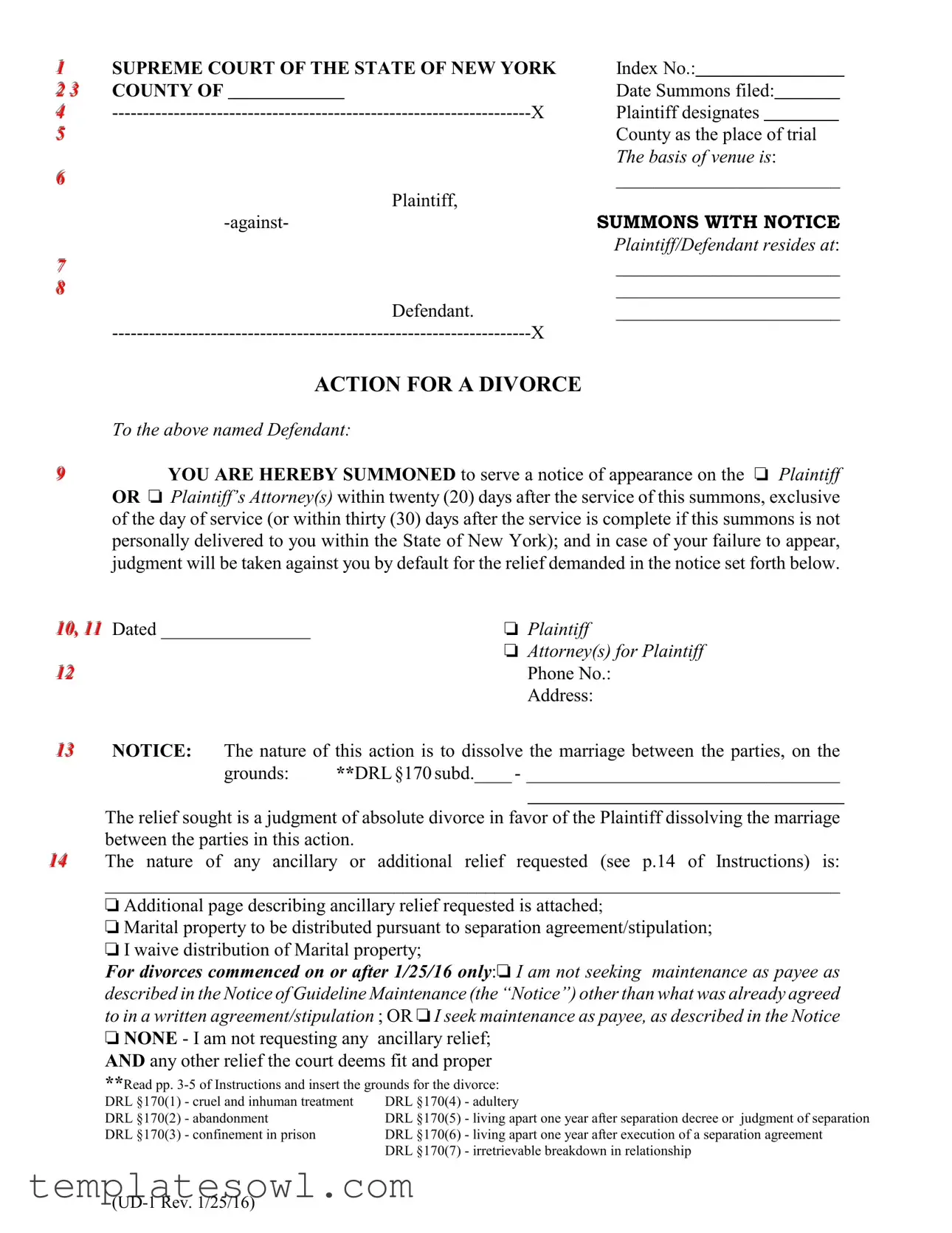1 |
SUPREME COURT OF THE STATE OF NEW YORK |
Index No.: |
|
2 3 |
COUNTY OF |
Date Summons filed: |
4 |
-------------------------------------------------------------------- |
X |
|
|
|
|
|
Plaintiff designates |
|
|
5 |
|
|
County as the place of trial |
6 |
|
|
The basis of venue is: |
|
Plaintiff, |
________________________ |
|
|
SUMMONS WITH NOTICE |
|
-against- |
7 |
|
|
Plaintiff/Defendant resides at: |
|
|
________________________ |
8 |
|
|
________________________ |
|
|
Defendant. |
________________________ |
|
-------------------------------------------------------------------- |
X |
|
|
|
|
|
ACTION FOR A DIVORCE
To the above named Defendant:
9YOU ARE HEREBY SUMMONED to serve a notice of appearance on the Plaintiff OR Plaintiff’s Attorney(s) within twenty (20) days after the service of this summons, exclusive of the day of service (or within thirty (30) days after the service is complete if this summons is not personally delivered to you within the State of New York); and in case of your failure to appear, judgment will be taken against you by default for the relief demanded in the notice set forth below.
10, 11 Dated ________________ |
Plaintiff |
12 |
Attorney(s) for Plaintiff |
Phone No.: |
|
Address: |
13NOTICE: The nature of this action is to dissolve the marriage between the parties, on the grounds: **DRL §170 subd.____ - __________________________________
The relief sought is a judgment of absolute divorce in favor of the Plaintiff dissolving the marriage between the parties in this action.
14The nature of any ancillary or additional relief requested (see p.14 of Instructions) is:
_______________________________________________________________________________
Additional page describing ancillary relief requested is attached;
Marital property to be distributed pursuant to separation agreement/stipulation;
I waive distribution of Marital property;
For divorces commenced on or after 1/25/16 only: I am not seeking maintenance as payee as described in the Notice of Guideline Maintenance (the “Notice”) other than what was already agreed to in a written agreement/stipulation ; OR I seek maintenance as payee, as described in the Notice
NONE - I am not requesting any ancillary relief; AND any other relief the court deems fit and proper
**Read pp. 3-5 of Instructions and insert the grounds for the divorce:
DRL §170(1) - cruel and inhuman treatment |
DRL §170(4) - adultery |
DRL §170(2) - abandonment |
DRL §170(5) - living apart one year after separation decree or judgment of separation |
DRL §170(3) - confinement in prison |
DRL §170(6) - living apart one year after execution of a separation agreement |
|
DRL §170(7) - irretrievable breakdown in relationship |
(UD-1 Rev. 1/25/16)

